 My son Ethan has fallen in love with the Gruffalo series. It is safe to say that, at times, our house has been taken over by the Gruffalo and the big bad mouse. From reading the books to watching the DVDs, making our very own Gruffalo teddy bear and pom-pom figures, and even taking a walk through a real-life Gruffalo trail. You name it, we have done it.
My son Ethan has fallen in love with the Gruffalo series. It is safe to say that, at times, our house has been taken over by the Gruffalo and the big bad mouse. From reading the books to watching the DVDs, making our very own Gruffalo teddy bear and pom-pom figures, and even taking a walk through a real-life Gruffalo trail. You name it, we have done it.
When I saw that The Gruffalo’s Child was being shown at our local theatre, I was quick off the mark to make sure we had tickets. If ever a new experience arises that Ethan has never done before, I try to make sure that we put our names down for it.
Activites such as going to the cinema or to the theatre can be a no-go for families who have children with autism or other special needs. There is such a huge level of planning ahead required: running through what will happen, how you’ll get there, etc. Then, by the time you get to the place, your child might be too overwhelmed by the environment to actually stay and enjoy the movie or play.
The day finally arrived for us to go and see Ethan’s first theatre show; it is always interesting to see what Ethan’s reaction will be. We prepared him for two days, telling him what we were going to see, where the show would be held, and who we would see once we were there. It helps Ethan cope a bit better when he knows what will be happening ahead of time.
We got to the theatre and there were a lot of excited children captivated by the thought of what they were about to see. There were also pictures of The Gruffalo Child on sticks; we got Ethan a stick that he immediately fell in love with and held proudly.
Stepping into the theatre, I looked around for our seats, and then realised that the tickets I had ordered were for seats located one row from the front. One part of me was really pleased with the fact that we were up-close and personal with the characters, while the other part of me thought, “How will Ethan deal with the proximity of our chairs to the stage?”
By this point, I had Ethan in my arms–he was unsure about the lighting in the room, the number of people, and the level of noise being given off. When we’re home, depending on where Ethan is in the house, he usually has to have every light on before he can walk around confidently. The sound of people chatting and laughing is something that I can filter out for the most part, but for Ethan it can be unbearable for him as he struggles to process sounds.
After finding our seats, we tried to put Ethan in the middle seat to stop him from wandering off mid-play. However, he refused to leave my lap, clinging onto me for dear life. With his hands over his ears, he sat on my lap, repeating the words, “don’t hurt me, don’t hurt me,” over and over again. He felt safe and comforted in this position.
Sure, other people saw Ethan, his body language, and his size (he’s very tall for his age), and likely wondered why he was acting this way. I didn’t care–my main thought was whether Ethan would be able to enjoy the story that he had come to love, or whether he would have a complete meltdown before it even began. I hugged him tightly, rubbing his hand to calm him, and told him about the book to familiarise him with what he was about to see. The lights dimmed; everyone fell silent.
Ethan spent the first five minutes with his hands over his face, and no amount of coersion was able to get him to take his hands away. I was just happy that he was still sitting. If it meant he had to watch the whole play through his fingers, so be it.
As the play went on, he slowly but surely let his hands down. He became engrossed in the characters, the storytelling, and the singing and dancing. He wasn’t so keen for me or his daddy to sing along with the story or get him involved. It was very much on his own terms or not at all.
As his mum, I was so happy that he was enjoying this new experience. He adapted so well to the environment, going from being completely overwhelmed to clapping along, laughing his little socks off, and generally interacting with the characters. It was such a heartwarming thing to experience with him: I couldn’t help but smile proudly, with a little happy tear in my eye, to see him so happy and enjoying something that he relates to in such a huge way.
Ethan seems to adjust really well to new situations, so that will continue to drive me to put him outside of his comfort zone. It will be small baby steps–nothing too extreme–but things that I know he will enjoy and love. I guess skydiving is a few years away yet!!
{The original version of this post appeared first on Mummy Logs.}
 What happens when your child fixates on something and nothing else will do? If you’re smart, you post on social media and hope that—somehow, some way—your words are heard by a larger audience.
What happens when your child fixates on something and nothing else will do? If you’re smart, you post on social media and hope that—somehow, some way—your words are heard by a larger audience.


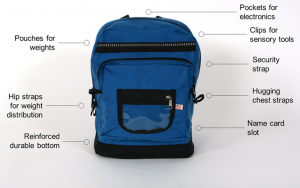 Back-to-school time often means new school gear, including a new backpack. Check out this Nesel (pronounced like “nestle”) Pack, designed by six college students at the University of Minnesota for children ages 6-12 with autism.
Back-to-school time often means new school gear, including a new backpack. Check out this Nesel (pronounced like “nestle”) Pack, designed by six college students at the University of Minnesota for children ages 6-12 with autism.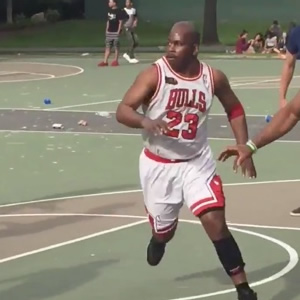
 Back in the beginning of July, a video of Jeffrey Harrison in Coeur D’Alene, Idaho, went viral. The video showed him playing a pickup game of basketball, dressed in Michael Jordan gear from head to toe—the jersey, the shorts, the sneakers, and even the sweatband on his left arm and compression sleeve on his left leg. Local news channel KREM (a CBS affiliate)
Back in the beginning of July, a video of Jeffrey Harrison in Coeur D’Alene, Idaho, went viral. The video showed him playing a pickup game of basketball, dressed in Michael Jordan gear from head to toe—the jersey, the shorts, the sneakers, and even the sweatband on his left arm and compression sleeve on his left leg. Local news channel KREM (a CBS affiliate) 
 Anyone who has had a pet knows the therapeutic value they can have.
Anyone who has had a pet knows the therapeutic value they can have. 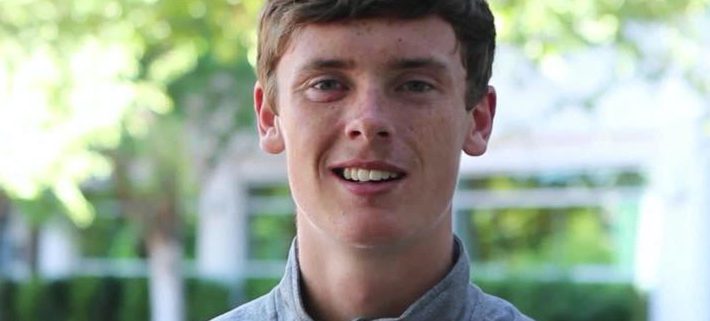


 It’s no secret that not everyone has the skills that are traditionally necessary to land, and keep, a typical job. Increasingly, we’ve heard stories about parents helping their children start their own businesses, for a variety of reasons. This is one of those stories.
It’s no secret that not everyone has the skills that are traditionally necessary to land, and keep, a typical job. Increasingly, we’ve heard stories about parents helping their children start their own businesses, for a variety of reasons. This is one of those stories.
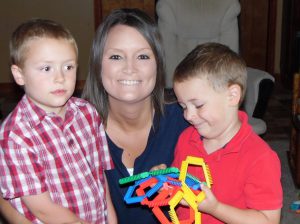 I am a special needs mother, and single too. The single means I have no partner in my duties. I do it all with no breaks. I can’t step aside even if I want to. I can’t walk away and take a breather after a full hour of tantrums. It’s hard, but we are doing great because that is how I am choosing to look at life.
I am a special needs mother, and single too. The single means I have no partner in my duties. I do it all with no breaks. I can’t step aside even if I want to. I can’t walk away and take a breather after a full hour of tantrums. It’s hard, but we are doing great because that is how I am choosing to look at life.
 Henry Normal is known in the U.K. for writing and producing several comedy series for television, as well as publishing several poetry books over the years. He recently wrote a new book of poetry—his first in 20 years—and performed it live for BBC Radio 4. The show, “A Normal Family,” is an emotionally charged tribute to his teenage son, Johnny, who was diagnosed with autism before the age of 3. In it, Henry intersperses humor along with observations and poems about life with autism. The result is a deeply poignant, personal look at autism that every parent raising a child with autism cannot just relate to, but also laugh along with.
Henry Normal is known in the U.K. for writing and producing several comedy series for television, as well as publishing several poetry books over the years. He recently wrote a new book of poetry—his first in 20 years—and performed it live for BBC Radio 4. The show, “A Normal Family,” is an emotionally charged tribute to his teenage son, Johnny, who was diagnosed with autism before the age of 3. In it, Henry intersperses humor along with observations and poems about life with autism. The result is a deeply poignant, personal look at autism that every parent raising a child with autism cannot just relate to, but also laugh along with.
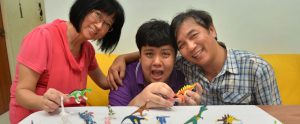 Even if you don’t care about the world of fashion or keep a scorecard on the various diplomats who visit the White House, chances are you’ll still be interested in this story. This past week, when the Prime Minister of Singapore visited President Obama, his wife Lee Ho Ching was photographed carrying a simple and fun dinosaur clutch bag designed not by a famous designer, but by a 20-year-old man with autism.
Even if you don’t care about the world of fashion or keep a scorecard on the various diplomats who visit the White House, chances are you’ll still be interested in this story. This past week, when the Prime Minister of Singapore visited President Obama, his wife Lee Ho Ching was photographed carrying a simple and fun dinosaur clutch bag designed not by a famous designer, but by a 20-year-old man with autism.

 My son Ethan has fallen in love with the Gruffalo series. It is safe to say that, at times, our house has been taken over by the Gruffalo and the big bad mouse. From reading the books to watching the DVDs, making our very own Gruffalo teddy bear and pom-pom figures, and even taking a walk through a real-life Gruffalo trail. You name it, we have done it.
My son Ethan has fallen in love with the Gruffalo series. It is safe to say that, at times, our house has been taken over by the Gruffalo and the big bad mouse. From reading the books to watching the DVDs, making our very own Gruffalo teddy bear and pom-pom figures, and even taking a walk through a real-life Gruffalo trail. You name it, we have done it.